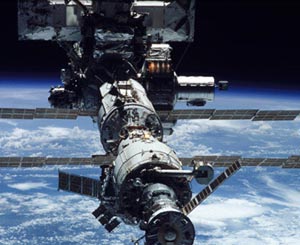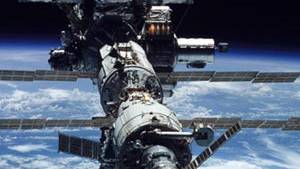NASA Plans Emergency Spacewalks to Fix Space Station
Source: space.com
 NASA is planning a pair of emergency spacewalks to repair the International Space Station after half of its cooling system shut down unexpectedly Saturday, forcing astronauts to power down several systems.
NASA is planning a pair of emergency spacewalks to repair the International Space Station after half of its cooling system shut down unexpectedly Saturday, forcing astronauts to power down several systems.The two repair spacewalks will be performed by American astronauts Doug Wheelock and Tracy Caldwell Dyson and could begin Thursday to replace a pump module in one of the space station’s two cooling system loops. Engineers are assessing the spacewalk plans before making a final decision.
"The crew is being informed that replanning for alternate spacewalk activity is underway," NASA officials said in a statement. A spacewalk had already been planned for Thursday for the Wheelock and Caldwell Dyson to upgrade some station systems.
NASA has stressed that Wheelock, Caldwell Dyson and the rest of the six astronauts living aboard the International Space Station are in no danger from the cooling system problem. But it is something Mission Control would like to address quickly since initial troubleshooting efforts have failed.
"An attempt overnight Sunday to close the circuit breaker and restart the Pump Module was not successful," NASA officials said. The space agency will give an update on the space station’s status and spacewalk planning at 4 p.m. EDT (2000 GMT).
Cooling system problems
The space station’s cooling system troubles began late Saturday when a circuit breaker tripped and shut down the Loop A cooling system pump module, which is used to move super-cold liquid ammonia through the station to remove excess heat from its systems and laboratories.
The shutdown triggered alarms in the space station, awakening the outpost’s six astronauts so they could begin turning off systems to reduce the heat load on the space station’s only remaining working cooling system string Loop B. The space station’s cooling system is critical to the outpost’s operation since it prevents the station from overheating.
Station astronauts shut down two control moment gyroscopes (used to maintain the station’s orientation in space without thrusters), some station power converters and command-routing equipment, and backup systems for the station’s S-band communications antenna and Global Positioning System. So some station systems were running without backups in place if they fail.
Mission Control reactivated one of the two offline gyroscopes on Sunday and astronauts installed jumper cables between some station systems and the power system on the outpost’s U.S. Destiny laboratory to preserve redundancy.
The space station is currently in stable shape with "most systems receiving cooling and many systems operating with redundancy following the installation of jumper cables from the Destiny Lab’s power system overnight," NASA officials said. "Temperatures on the Main Bus Switching Units, which route power to various systems, are a little higher than normal, but well within normal parameters and are stable."
Repair spacewalks ahead
The next step is a spacewalk repair. To prepare for the first spacewalk, Mission Control vented any remaining liquid ammonia from the Loop A system.
The space repair would likely call for two spacewalks by Wheelock and Caldwell Dyson, who would physically replace the afflicted pump module in the first excursion and hook up ammonia fluid and electrical connections in the second one.
There are two spare ammonia pump modules stored outside the space station on spare parts platforms attached to the orbiting laboratory’s backbone-like main truss.
The space station is currently home to three Americans (NASA astronaut Shannon Walker is the third) and three Russian cosmonauts representing Russia’s Federal Space Agency.
Wheelock and Caldwell Dyson had originally planned to perform a spacewalk Thursday to hook up a power extension cord for a future Russian laboratory and install equipment on part of the station’s Russian segment. That work will be rescheduled to a later date, NASA officials said.
Astronauts have been living aboard the $100 billion International Space Station, which is being built by five international space agencies representing 16 different countries, for nearly 10 years. Construction began on the orbiting laboratory in 1998.
NASA plans to fly two space shuttle missions (in November and February, respectively) to complete construction of the space station before retiring the shuttle fleet next year. Congress is discussing the possible addition of a third and final shuttle mission, which if approved would likely carry spare parts and other supplies to the space station in next summer.
Article from: space.com






















